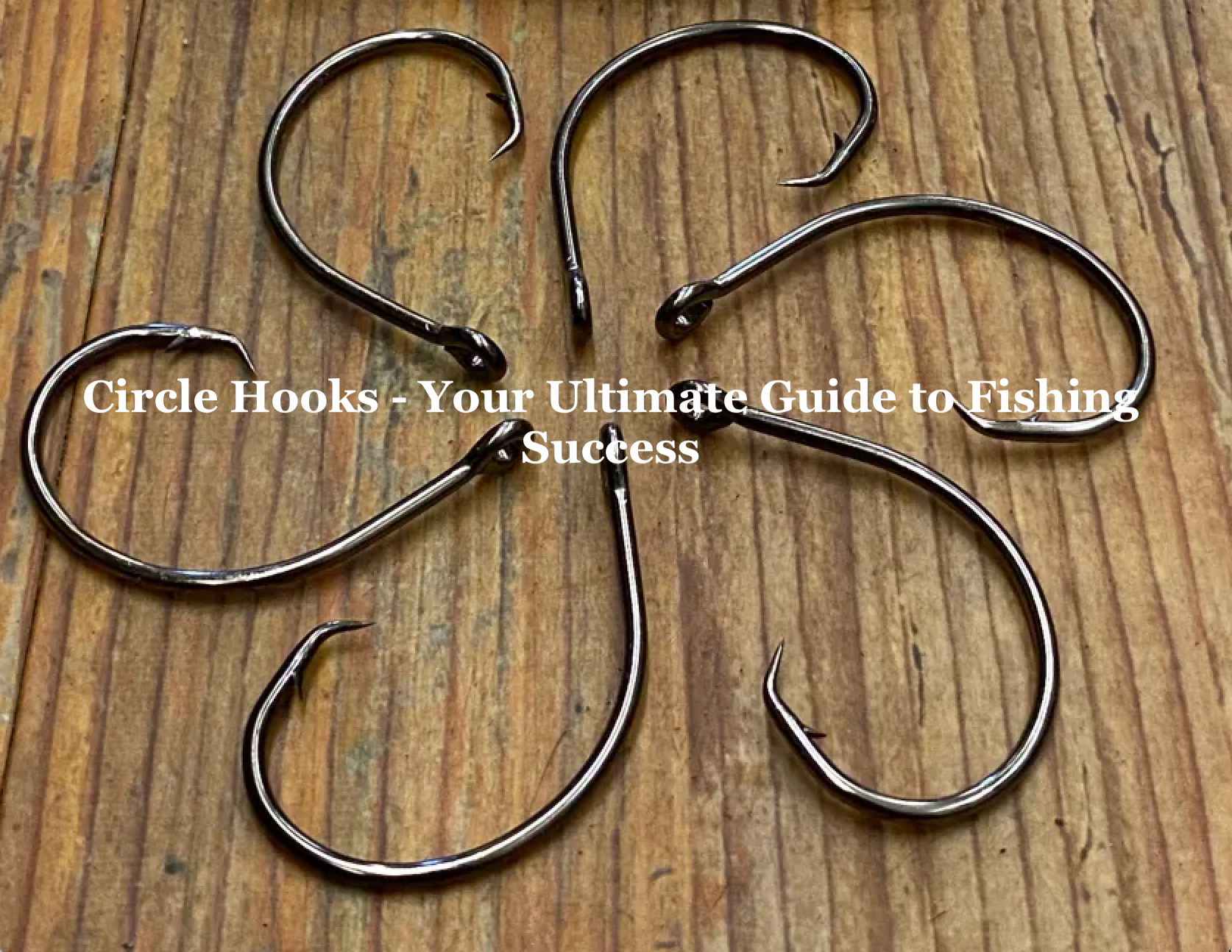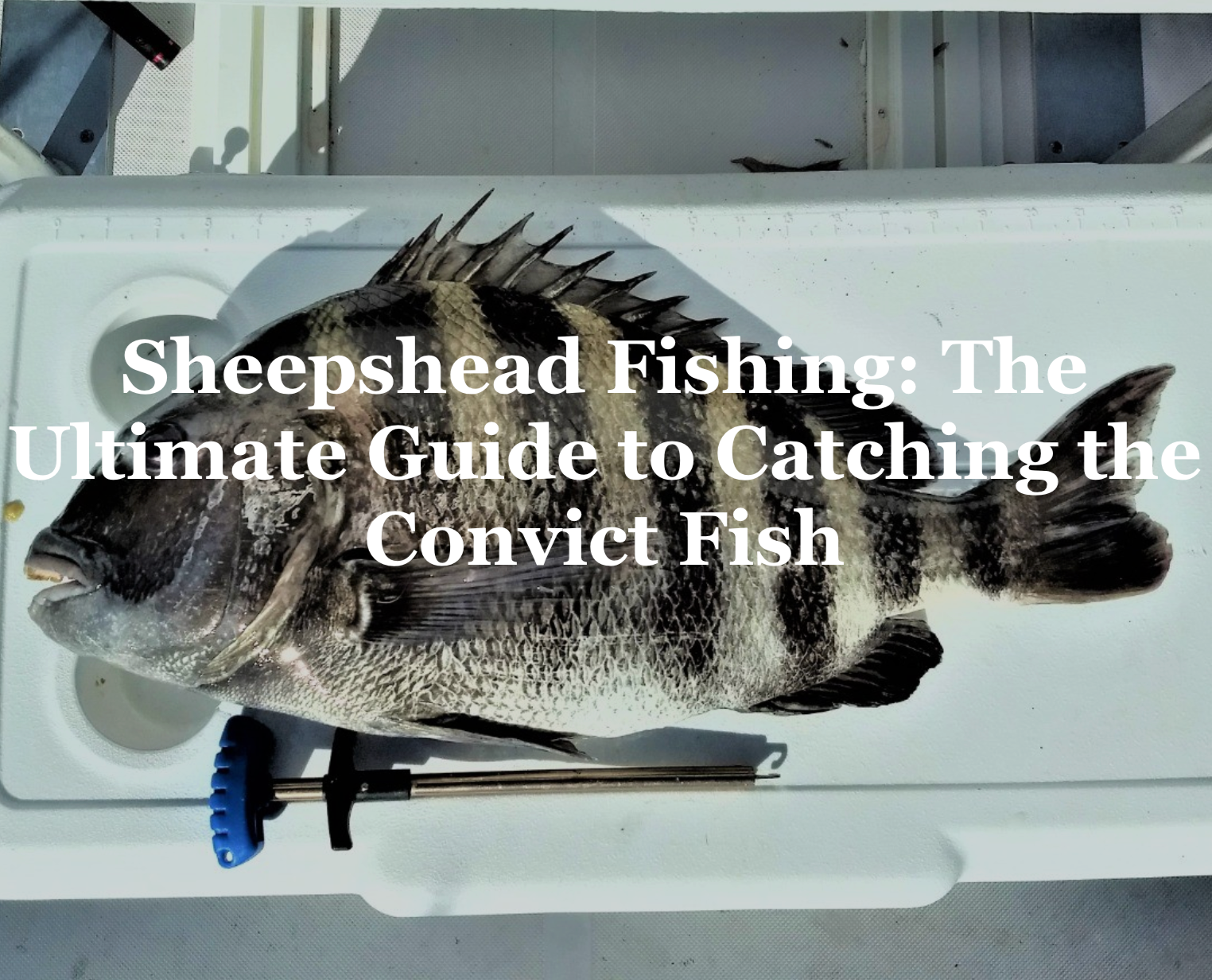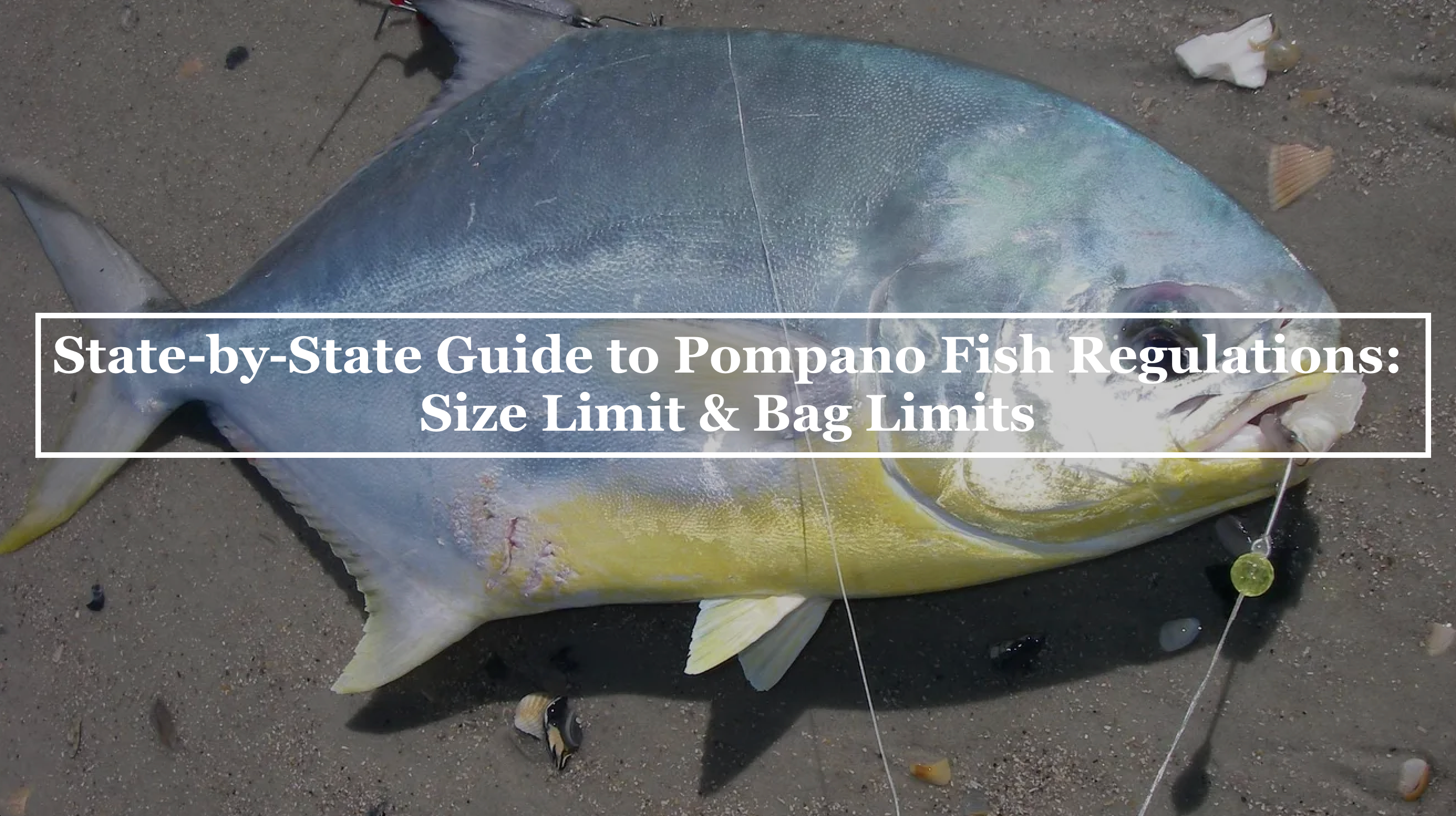When it comes to fishing hooks that blend performance with fish-friendly design, circle hooks stand out as a game-changer for anglers. These uniquely shaped fishing hooks, with their inward-curving points, are engineered to hook fish in the corner of the mouth, reducing gut-hooking and making them a favorite for catch-and-release. Whether you’re chasing catfish in murky rivers or striped bass in the surf, circle hooks offer reliability and ease. This guide dives into everything you need to know about circle hooks, from sizing for specific species to mastering their use, ensuring your next trip is a triumph.
What Are Circle Hooks and Why Use Them?

Circle hooks aren’t your average fishing hooks—they’re a revolution in angling. Their design ensures the hook point rolls into the fish’s mouth as it swims away, securing a safe, lip-hooked catch. This makes them ideal for conservation-minded anglers, as well as those targeting hard-fighting fish. In both freshwater fishing and saltwater fishing, circle hooks reduce fish mortality while boosting hookup rates, a win-win for any fisherman. Brands like Gamakatsu and Owner Hooks craft some of the best circle hooks, known for their sharpness and durability, perfect for tackling a range of species.
The History of the Circle Hook: A Fishing Revolution

The story of circle hooks stretches back centuries, rooted in the ingenuity of ancient Pacific Island fishermen. These early anglers carved hooks from bone and shell, noticing that a circular shape with an inward point hooked fish in the lip rather than the gut, making retrieval easier and less harmful. Fast forward to the 20th century, and circle hooks gained modern traction in the commercial longline fishing industry, where they reduced bycatch mortality—think sea turtles and non-target fish—while still landing the intended haul. By the 1990s, recreational anglers caught on, and brands like Gamakatsu and Owner Hooks began mass-producing circle hooks for sport fishing.
This evolution cemented circle hooks as a cornerstone of conservation fishing. Their design was no accident—it was honed by trial and error across generations, blending ancient wisdom with modern technology. Today, circle hooks are a symbol of responsible angling, mandated in many fisheries worldwide to protect vulnerable species. Understanding their origins adds a layer of appreciation for these fishing hooks, connecting today’s anglers to a legacy of sustainability and skill.
Circle Hook vs J Hook: Which Should You Choose?

Choosing between a circle hook and a J hook often comes down to your fishing style and priorities. Circle hooks excel in scenarios where fish safety is key—their inward-curving point ensures a lip hook, minimizing gut-hooking and making them perfect for catch-and-release fishing. They’re also easier to use for beginners since they set themselves as the fish swims off, requiring no hard yank. J hooks, with their traditional shape, offer more control for active hook setting, which some anglers prefer for fast-striking fish or when using artificial lures. However, J hooks are more likely to gut-hook, which can harm fish and complicate release. For conservation-focused fishing or species like catfish and sheepshead, circle hooks are often the better choice, while J hooks might suit anglers who need precision with lures or quick sets.
The debate between circle hooks and J hooks also touches on versatility. Circle hooks are a go-to for live bait fishing, especially in saltwater fishing, where their design shines with baits like shrimp or cut bait. J hooks, on the other hand, are often favored in freshwater fishing for techniques like topwater lures or crankbaits, where an aggressive set is needed to drive the hook home. Both have their place in your tackle box, but circle hooks often win for their fish-friendly nature and ease of use, especially in regulated fisheries where minimizing fish harm is a priority. Knowing the strengths of each helps you pick the right fishing tackle for the job.
Circle Hook Benefits: Why They’re a Game-Changer

The circle hook benefits extend far beyond their fish-friendly design. First, they simplify the hook-setting process—there’s no need for a hard yank, which is a relief for beginners intimidated by traditional hook setting. The fish does the work, swimming off and letting the hook roll into the corner of its mouth, ensuring a secure hold with minimal effort. This makes circle hooks ideal for live bait fishing, where the bait’s natural movement triggers the strike without angler intervention.
Another advantage is their versatility across fishing tackle setups. Circle hooks thrive in scenarios from shallow flats to deep sea fishing, handling everything from small panfish to massive marlin. Their inward point reduces snags on structure, a boon for anglers fishing around reefs or pilings. Plus, they’re a tournament fishing favorite—pros rely on them to land fish quickly and safely, meeting strict catch-and-release rules while maximizing points. The combination of ease, adaptability, and conservation makes circle hooks a must-have for any angler serious about their craft.
Circle Hooks Size Chart: Find the Perfect Fit

Picking the right circle hook size can feel daunting, but a general size chart simplifies the process for various species. For smaller fish like sea trout or sheepshead, stick to 1/0 to 3/0 circle hooks, which handle delicate baits and smaller mouths with ease. Medium-sized species like catfish or surf-caught flounder do well with 4/0 to 6/0 hooks, offering enough strength for larger baits without overpowering the fish. For bigger fighters—think striped bass, red drum, or trophy catfish—opt for 7/0 to 10/0, ensuring the hook can manage hefty baits and hard fights. Always consider the bait size and the fish’s mouth when choosing, as the right circle hook size ensures better hookups and safer catches across freshwater fishing and saltwater fishing scenarios.
How to Use a Circle Hook

Using a circle hook is simpler than you might think, but it requires a shift in mindset. Unlike traditional J-hooks, you don’t set the hook with a hard yank. Instead, let the fish take the bait and start swimming. As it moves, the line tightens, and the circle hook slides to the corner of the mouth, setting itself. Keep your rod tip up and reel steadily—no jerking needed. This hands-off approach makes circle hooks perfect for beginners and pros alike, ensuring safer catches in both freshwater fishing and saltwater fishing scenarios.
How to Snell a Circle Hook

Snelling a circle hook creates a strong, aligned connection for better hookups. Start by passing the line through the hook eye, pulling a few inches through. Form a loop near the eye, then wrap the tag end around the shank and line 5-7 times, working toward the hook point. Pull the tag end through the loop, then tighten by pulling the main line and tag end simultaneously. This aligns the hook for optimal setting. For a visual, search for a “how to snell a circle hook video”—seeing the process in action makes it easier to master this essential skill for fishing tackle prep.
How to Bait a Circle Hook

Baiting hooks with a circle hook takes a bit of finesse to ensure proper presentation. Start by choosing a bait that matches your target—live shrimp for trout, cut bait for catfish, or sand fleas for surf fish. Thread the bait onto the hook so the point remains exposed; for instance, run the hook through the head of a shrimp or the meaty part of a baitfish. Avoid burying the point in the bait, as this can prevent the hook from rolling into the fish’s mouth. Keep the bait natural and lively, letting it move freely to entice strikes. Circle hooks work best when the fish can take the bait and swim off, setting itself without your intervention.
How to Set a Circle Hook
Setting a circle hook isn’t about force—it’s about patience. When a fish bites, resist the urge to snap the rod up. Let the fish swim off with the bait, allowing the line to come tight naturally. As the pressure builds, the hook will catch in the fish’s mouth corner, securing the catch. Reel in with steady pressure, keeping the line taut to prevent slack. This method ensures the hook does its job without risking a gut hook, a key reason circle hooks are favored for conservation-focused fishing.
When to Use a Circle Hook
What Size Circle Hook for Catfish?

Catfish fishing demands a circle hook that can handle their powerful jaws and tenacious fights. For most catfish—think channel cats or smaller blues—a 5/0 to 7/0 circle hook size works wonders. These sizes accommodate the baits catfish love, like cut bait or chicken liver, while ensuring a solid hookset in their tough mouths. If you’re chasing trophy-sized flatheads or monster blues, scale up to an 8/0 or 10/0 to match their girth. The key is matching the circle hook size to the bait and the fish’s mouth—too small, and you’ll miss hookups; too large, and you’ll struggle to get a bite.
What Size Circle Hook for Sea Trout?
Sea trout, with their delicate mouths and aggressive strikes, require a finesse approach. A 1/0 to 3/0 circle hook is typically perfect for these saltwater beauties. These sizes pair well with live shrimp or small baitfish, common trout attractors, allowing the hook to set cleanly without overpowering the fish. In murky waters or when targeting larger speckled trout, a 4/0 can work, especially with bigger baits. Circle hooks shine here by minimizing deep hooking, letting you release trout unharmed while still landing plenty for the cooler.
What Size Circle Hook for Striped Bass?
Striped bass are a prized catch in saltwater fishing, known for their explosive runs. For these fighters, a 6/0 to 8/0 circle hook size strikes the right balance. Stripers often take larger baits like bunker or eels, and these hooks accommodate that while ensuring a secure lip hook. In areas with smaller stripers, a 5/0 might suffice, but for trophy fish—especially in the 30- to 50-pound range—don’t shy away from an 8/0. Circle hooks help protect these fish during catch-and-release, a critical factor in regions with strict regulations.
What Size Circle Hook for Surf Fishing?

Surf fishing demands versatility, as you might hook anything from flounder to sharks. A 4/0 to 6/0 circle hook is a solid starting point for most surf species. These sizes handle common baits like sand crabs or cut bait while standing up to the rough conditions of the surf zone. For larger targets like red drum or sharks, bump up to a 7/0 or 8/0 to match the heavier tackle often used in surf fishing. The inward curve of circle hooks helps prevent snags on sandy bottoms, making them a surf angler’s best friend.
What Size Circle Hook for Sheepshead?

Sheepshead, with their small, bony mouths and sneaky bites, require precision. A 1/0 to 2/0 circle hook size is ideal for these structure-loving fish. These smaller hooks fit their mouths perfectly, allowing you to thread on fiddler crabs or shrimp without overwhelming the bait. Sheepshead fishing often happens around pilings or reefs, where fluorocarbon leaders and circle hooks team up to outsmart wary fish. The smaller size ensures a subtle presentation, while the hook’s design guarantees a firm lip hold, even during their notorious head shakes.
Can I Use Kirbed Circle Hooks for Snapper in Florida?
Kirbed circle hooks, with their offset points, can be tricky for snapper fishing in Florida due to regulations. In many Florida waters, especially for reef fish like snapper, non-offset circle hooks are often required to reduce gut-hooking and protect fish populations. Kirbed hooks, where the point angles outward, may not comply with these rules, particularly in federal waters of the Gulf of Mexico. Always check local regulations before using them, but for snapper, a standard inline circle hook in a 3/0 to 5/0 size is a safer bet to stay legal and effective.
Environmental Fishing: Circle Hooks and Conservation
Circle hooks are a cornerstone of environmental fishing, championed for their role in reducing fish mortality. Unlike traditional J hooks, which often gut-hook fish and cause internal damage, circle hooks target the lip, making release safer for the fish. This is critical for species with regulated populations—like striped bass or red snapper—where survival after release can impact future stocks. Studies have shown that circle hooks can reduce deep-hooking rates by up to 50%, a statistic that’s driven their adoption in fisheries worldwide.
Beyond fish, circle hooks help protect the broader ecosystem. In deep sea fishing, they minimize bycatch of non-target species like sharks or turtles, which often get gut-hooked on J hooks and suffer fatal injuries. Regulations in places like the Gulf of Mexico now require circle hooks for certain fisheries, reflecting their proven impact on conservation fishing. For anglers, using circle hooks isn’t just about following rules—it’s about preserving the waters we love, ensuring future generations can experience the thrill of the fight.
Why Circle Hooks Are a Must-Have

Circle hooks aren’t just another piece of fishing tackle—they’re a revolution for anglers. Their ability to hook fish safely, reduce mortality, and handle everything from catfish to sheepshead makes them indispensable. Whether you’re surf fishing, chasing sea trout, or battling stripers, the right circle hook size and technique can make all the difference. So grab a pack, rig up, and let circle hooks turn your next fishing trip into a story worth telling.





Share:
Octopus Hook: The Ultimate Guide to Mastering This Angler’s Essential
Kahle Hooks: Guide to Mastering This Versatile Fishing Hook